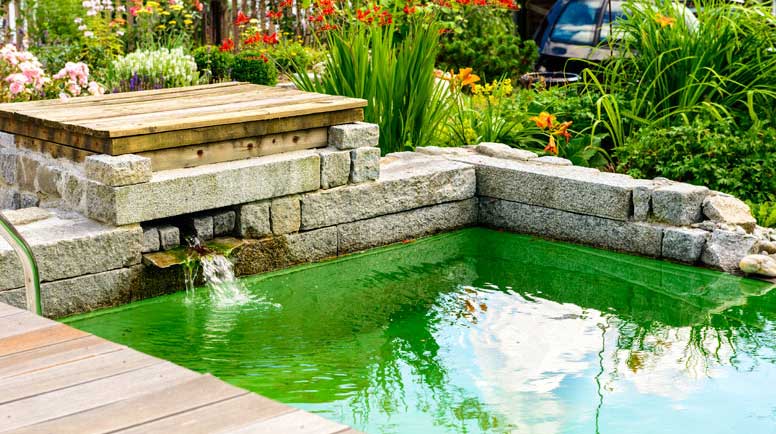HOW TO CHOOSE OUTDOOR FURNITURE
Selecting the right seating and eating options for your backyard
For trusted expertise and superior results,
find a landscape professional near you.

Including a water feature in your backyard is an ideal way to make your landscape a tranquil space. But once your pond, waterfall, or fountain is installed, how can you best maintain it? Here’s an introduction to the important tools, terms and seasonal considerations you should understand to help care for your outdoor water spots.
A Skimmer and its Parts
A skimmer is designed to sweep the surface of the water to keep it debris free.
Water Level
Every water feature will experience evaporation and water loss; the amount of water loss depends on waterfall height, the amount of water splashing outside the pond, stream length, the amount of sunlight the feature receives, and the temperature of the region. During hot spells, most water features will need water added weekly to counteract evaporation.
The water level of a pond can be monitored using the opening of the skimmer mouth as a reference. The ideal water level should be set at about 3/4 -inch below the top of the skimmer mouth. You can check the water level each time you empty the debris net and add additional water when necessary.
Leaks
If you notice you have to add water on a daily basis, or hear the "hissing" of your water fill valve constantly running, (after properly setting the water level) you may have a leak, which most often occur along the perimeter of waterfalls and streams. These leaks are generally due to the ground settling which causes the water to trickle over the edge of the liner. These leaks can be easily fixed.
Season Care of Your Water Features
Fall and Winter
Spring
If there is a layer of "crud" at the bottom of the pond and the water is dark in color, it would be a good idea to do a full clean-out. The best time to perform a pond clean-out is the early spring, ideally before the water temperature in the pond is above 55° F.
To clean the water feature, drain the water into the surrounding landscape. Then use a garden hose to rinse the rocks and gravel. Start at the top and work your way down to the bottom. Periodically turn the clean-out pump on to remove the dirty water. You can discontinue the periodic pumping once the water rinsing down to the bottom begins to look clear. Remove the pump and begin filling the pond.
Maintaining your water features is relatively simple process and doesn’t require a large investment of time. For the little work that is required, these outdoor oases provide the setting, sound and beauty that add peace to any landscape.
We recently updated our Privacy Policy. By continuing to use this website, you acknowledge that our revised Privacy Policy applies.